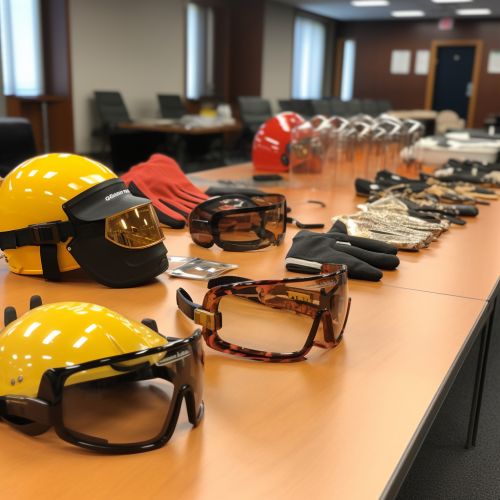Occupational Safety and Health
Introduction
Occupational Safety and Health (OSH) refers to the field concerned with the safety, health, and welfare of people at work. The goals of OSH include fostering a safe and healthy work environment. OSH may also protect co-workers, family members, employers, customers, and many others who might be affected by the workplace environment. OSH Act is a federal law that provides regulations, guidelines, and standards to promote safety in the workplace.


History
The history of Occupational Safety and Health dates back to ancient civilizations. The concept of protecting workers from the hazards of their jobs has been a concern for centuries. In the early industrial age, the introduction of machinery and the factory system of production significantly increased workplace hazards. The Industrial Revolution in the 19th century saw the development of new machinery and techniques that led to a dramatic increase in workplace injuries and illnesses.
Principles
The principles of Occupational Safety and Health are based on the anticipation, recognition, evaluation, and control of hazards in the workplace. These principles are applied through a systematic program of hazard identification, risk assessment, and risk control. The primary goal is to reduce or eliminate the risk of injury or illness to workers.
Legislation and Regulation
Legislation and regulation play a crucial role in Occupational Safety and Health. In many countries, there are specific laws and regulations that govern OSH. In the United States, the Occupational Safety and Health Act of 1970 created both the National Institute for Occupational Safety and Health (NIOSH) and the Occupational Safety and Health Administration (OSHA). OSHA is responsible for developing and enforcing workplace safety and health regulations.
Occupational Hazards
Occupational hazards are aspects of work that have the potential to cause harm. These can be divided into several categories, including physical hazards, chemical hazards, biological hazards, ergonomic hazards, and psychosocial hazards.
Physical Hazards
Physical hazards are the most common type of occupational hazard. They include factors in the environment such as noise, vibration, lighting conditions, temperature, and radiation.
Chemical Hazards
Chemical hazards are present when a worker is exposed to any chemical preparation in the workplace. This can include exposure to chemicals in the form of solids, liquids, gases, mists, fumes, smoke, and vapors.
Biological Hazards
Biological hazards include exposure to infectious micro-organisms, such as bacteria, viruses, fungi, and parasites. Workers in healthcare, laboratory work, agriculture, and animal care are particularly at risk.
Ergonomic Hazards
Ergonomic hazards occur when the type of work, body positions, and working conditions put strain on your body. They are the hardest to spot since you don’t always immediately notice the strain on your body or the harm that these hazards pose.
Psychosocial Hazards
Psychosocial hazards refer to the psychological and organizational factors that impact the psychological response to work and work conditions, potentially causing psychological or physical harm.
Occupational Diseases
Occupational diseases are illnesses or disorders that occur as a result of work or occupational activity. They are a wide group of diseases that may be caused by chemicals, dust, radiation, repetitive trauma, and other workplace conditions. Examples include asbestosis, silicosis, and occupational stress.
Occupational Safety and Health Professionals
Occupational Safety and Health professionals work to prevent harm to workers, property, the environment, and the general public. They are involved in the design and implementation of safety programs, the identification and control of workplace hazards, and the evaluation and improvement of programs, procedures, and equipment.
